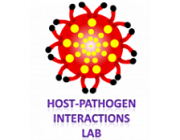Citation:
Rachana Pattani Ramachandran, Vences-Catalán, Felipe , Wiseman, Dan , Zlotkin-Rivkin, Efrat , Shteyer, Eyal , Melamed-Book, Naomi , Rosenshine, Ilan , Levy, Shoshana , and Aroeti, Benjamin . 2018.
“Esph Suppresses Erk By Spatial Segregation From Cd81 Tetraspanin Microdomains”. Infect Immun, 86, 10. doi:10.1128/IAI.00303-18.
Publisher's VersionAbstract:
Enteropathogenic (EPEC) belongs to a group of enteric human pathogens known as attaching-and-effacing (A/E) pathogens, which utilize a type III secretion system (T3SS) to translocate a battery of effector proteins from their own cytoplasm into host intestinal epithelial cells. Here we identified EspH to be an effector that prompts the recruitment of the tetraspanin CD81 to infection sites. EspH was also shown to be an effector that suppresses the mitogen-activated protein kinase (MAPK)/extracellular signal-regulated kinase (Erk) signaling pathway at longer infection times. The inhibitory effect was abrogated upon deletion of the last 38 amino acids located at the C terminus of the protein. The efficacy of EspH-dependent Erk suppression was higher in CD81-deficient cells, suggesting that CD81 may act as a positive regulator of Erk, counteracting Erk suppression by EspH. EspH was found within CD81 microdomains soon after infection but was largely excluded from these domains at a later time. Based on our results, we propose a mechanism whereby CD81 is initially recruited to infection sites in response to EspH translocation. At a later stage, EspH moves out of the CD81 clusters to facilitate effective Erk inhibition. Moreover, EspH selectively inhibits the tumor necrosis factor alpha (TNF-α)-induced Erk signaling pathway. Since Erk and TNF-α have been implicated in innate immunity and cell survival, our studies suggest a novel mechanism by which EPEC suppresses these processes to promote its own colonization and survival in the infected gut.
